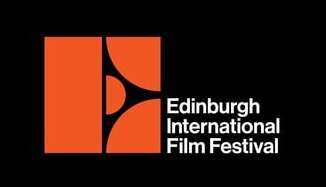あらすじ
In a poor neighborhood of Marseille, 16-year-old Clim falls in love with François, an adopted black youth aged 18 but known as Bébé. Accused of rape, Bébé is sent to jail. The pregnant Clim recounts their story to the unborn child in her womb. Both families mount a campaign to rebut the false charges of rape while Bébé and Clim wait it out, sacrificing their youth and their innocence to this ordeal, but reaching out to all those people who still have a heart where their heart belongs.
クレジット
監督 (1)
俳優 (18)
映画製作・配給会社 (4)
- 製作代表 : Agat Films - Ex nihilo
- Co-productions : STUDIOCANAL, Diaphana, Arte France Cinéma, France 2 Cinéma
- Film exports/foreign sales : Tamasa Distribution
- フランス国内配給 : Diaphana
クレジットタイトル詳細 (12)
- 製作代表 : Gilles Sandoz
- Screenwriters : Robert Guédiguian, Jean-Louis Milesi
- フォトディレクター : Bernard Cavalié
- 作曲家 : Jacques Menichetti
- 監督補佐 : Jacques Reboud
- 編集担当 : Bernard Sasia
- 録音技師 : Laurent Lafran
- 共同製作 : Michel Saint-Jean
- 報道担当(映画) : Marie-Christine Damiens
- Assistant editors : Valérie Meffre, Lise Roure
- 装飾 : Michel Vandestien
- サウンド・ミキサー : Dominique Gaborieau
この映画を見る
Watch Where the Heart Is in VOD
| Platforms | Model | Price | Quality |
|---|
Sorry, your search returned no results.
| Platforms | Model | Price | Quality |
|---|
Sorry, your search returned no results.
| Platforms | Model | Price | Quality |
|---|
Sorry, your search returned no results.
| Platforms | Model | Price | Quality |
|---|
Sorry, your search returned no results.
技術面詳細
- タイプ : 長編映画
- ジャンル : フィクション
- サブジャンル : 人生ドラマ
- 言語 : フランス語
- その他の国の共同制作者 : フランス
- Original French-language productions : はい
- 製作国 : 100%フランス (フランス)
- 製作年 : 1998
- フランス公開 : 09/12/1998
- 上映時間 : 1 時間 53 分
- 経過状況 : 公開済み
- ニュメロ·デ Visa : 92.654
- ビザ発行日 : 23/10/1998
- CNC助成 : はい
- 生産のフォーマット : 35ミリ
- カラータイプ : カラー
- 画面セット : 1.85
- Audio format : ドルビーSR
興行収入・公開作品
興行収入
このコンテンツは登録ユーザー専用です。
会員登録はお済みですか?コンテンツを見るにはログインしてください。
International releases
| 国 | 映画配給会社 | バイヤー | 劇場公開日 | Titre local |
|---|
Sorry, your search returned no results.
テレビ放送
このコンテンツは登録ユーザー専用です。
会員登録はお済みですか?コンテンツを見るにはログインしてください。
ニュース&アワード
映画祭でのセレクション (8)


Melbourne French Film Festival
オーストラリア, 2000
選出作品


受賞 (1)
About
Where people used to have a heart, what do they have these days? The answer’s in doubt, and let me just say I find that worrying. It’s no longer the specter of Communism that’s haunting Europe and the world, it’s the specter of ethnic war. A specter that raises its head whenever tough times arrive. Which makes the ‘New York–Marseille–Sarajevo’ equation instructive. Different countries, different periods, different religions, different societies—same tough times. The twentieth-century can claim to have invented the very concept of genocide. So as this century with its non-stop horrors comes to a close, the parable behind the film is simple: it supposes that ‘heart’ is the last rampart, the only rampart, or maybe just the current rampart against all the disasters that continue to befall us with alarming regularity. The film tries to get down to primal, archaic things, to use a glance, a smile, a tear, or a few words or gestures to show that no theory can completely explain this world. It seeks to reveal the characters in all their beauty, grandeur and essence—in short, all their sacredness. It’s about the times and places when life encompasses humanity in its entirety and—above all—its eternity. (Robert Guédiguian)














































